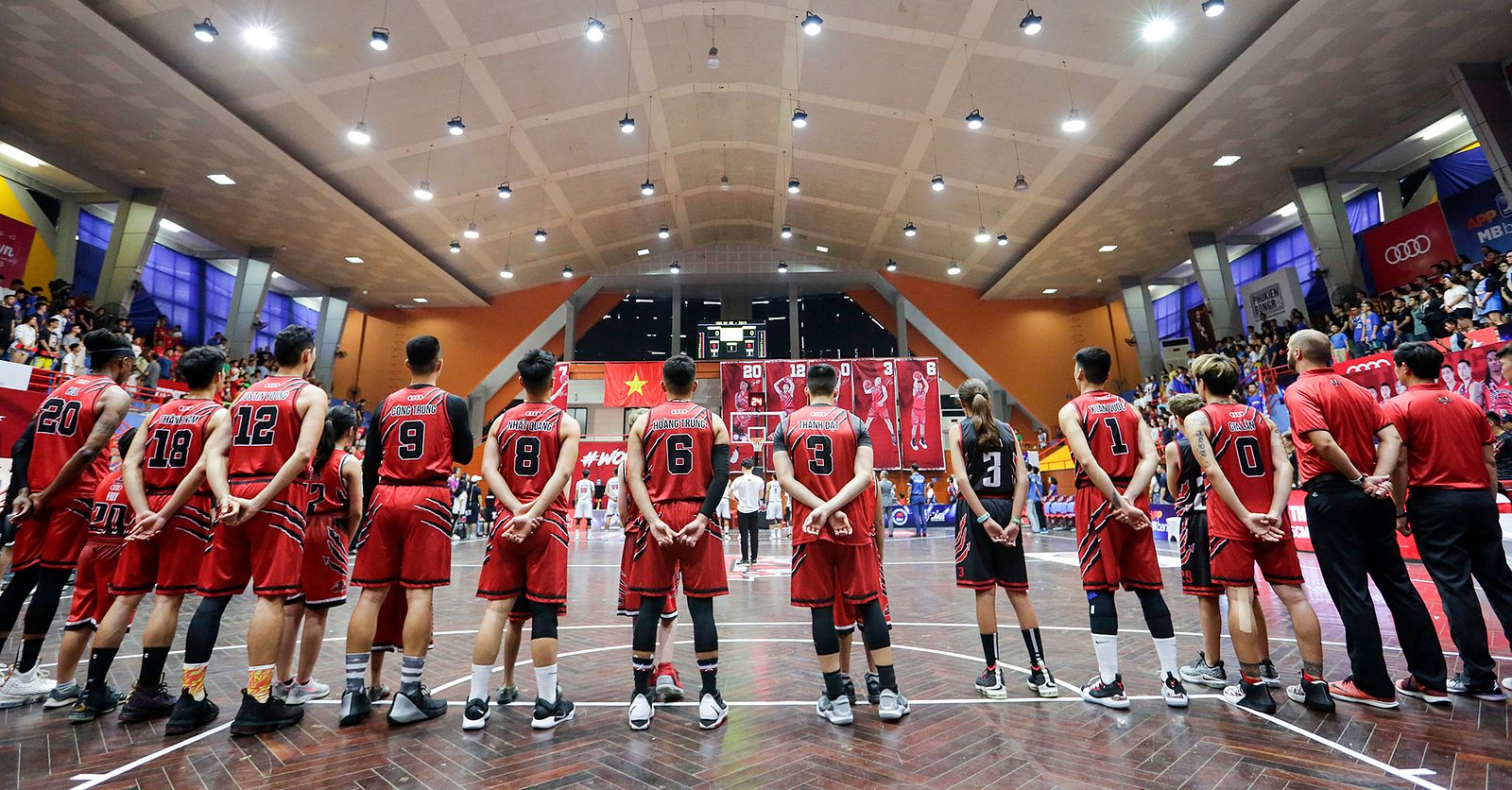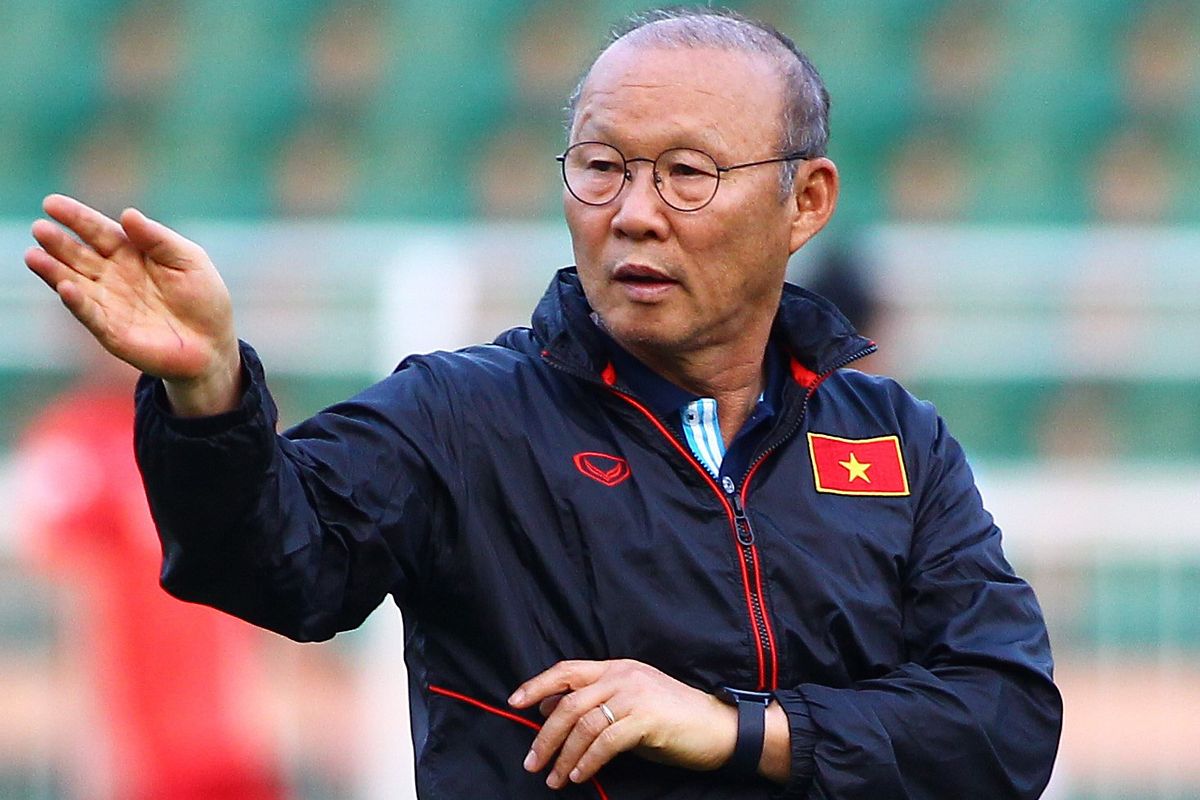I first encountered Muay Thai on a photo assignment in Bangkok a number of years ago, and this graceful, devastatingly lethal martial art has piqued my curiosity ever since. After returning to the United States, I began following the sport via late-night cable TV matches broadcast from Southeast Asia.
As part of my deeper exploration into the neighborhoods and cultures that make up Saigon, I discovered the No.1 Muay Thai gym during a photo walk along Tran Hung Dao Street in District 5. The class in session that Sunday morning was made up of mostly younger, buff males, sweating and panting through repetitive turns of lifting massive tires, doing push-ups, sit-ups and wheel barrel carries, as well as hand and leg coordination drills.
Sitting under the ring ropes, camera in hand, the repeated loud strikes of heavy pad kicks over my head, flash-backed to the cartoon-like call-outs of “Pow,” “Thud” and “Bam” from TV and comic book series.

Group stretches during a training session at the District 5 gym.



Nhat leading the group in back bends.
Little did I know at the time that the instructor, who invited me in to participate and photograph, was none other than the Vietnamese and seven-time World Amateur Champion Nguyen Tran Duy Nhat. His humble, soft-spoken manner belied his ferocity in the ring and “rock-star status,” as exemplified by the trophies and articles adorning the gym.

Some of Nhat's trophies, along with articles about him.

Nhat and his mom, Nguyen Thi Ngoc.
In getting to know Nhat, I learned that he comes from a family of respected martial arts masters: grandfather — Tan Hoang; father — Nguyen Tran Dieu, and mother Nguyen Thi Ngoc Anh [aka Minh Anh Ngoc; pictured with Nhat].
“Growing up in a family such as this, I was exposed to the benefits of martial arts from an early age — training my body and mind, and I decided to embrace the practice,” he said. I asked Nhat why he chose Muay Thai over other martial art forms and he replied that “it more resembled the ancient forms of Vietnamese hand-to-hand combat, in addition to the mental discipline aspects.”
I particularly noticed Nhat’s demeanor as he led the drills; a calmness that seems unflappable and commands respect. He does have control over his emotions — both outside and inside the ring.
Muay Thai, as the names implies, originated in Thailand as a hand-to-hand combat technique during the Siam-Burmese conflicts of the mid-18th Century. As well as being a fighting technique in actual warfare, Muay, as it is shortened, became a sport in which the opponents fought in front of groups of spectators. These contests became an integral part of local festivals and celebrations.
It is also referred to as “The Art of Eight Limbs,” using eight body parts that mimic combat weapons. The hands become swords and daggers; shins and forearms are hardened to act like armor against blows. Devastating, close-in elbow blows are used to fell opponents like a hammer, and the legs and knees act as an ax and pole. The body operates as one unit, while the fighter uses his knees and elbows to probe his opponent for an opening to attack. It’s no wonder Muay Thai is now one of the most well-known and practiced martial arts in the world.

Precision leg lift drills.

Nhat leading a warm-up run.
Conditioning is vital to Muay Thai. Even though I work out, I was exhausted keeping up with non-stop training drills, as I was attempting to immerse myself in the floor exercises while taking photos. Ancient fighting encounters were a matter of endurance and lasted until a final combatant was left standing. In today’s contests, pro fighters go five three-minute rounds with a two-minute break between each one. Most club matches here have three one- or two-minute rounds, depending on level of experience.
Nhat next invited me to his other gym — in District 1 at the Tao Dan Sports Center. Classes of up to 30 people on all levels, ranging in age from eight to seniors, males as well as females, are drilled for two hours in a demanding regimen which included jumping over the legs of other seated members in rapid succession to improve dexterity; lengthy jump rope and long rope sessions; proper form for stands and kicks; and repeated punching and kicking of the heavy bags. Much care and attention are also paid to details, such as the proper way to wrap the hands before fighting.

A trainee carefully wraps her wrists and hands.

Practicing high frontal knee kicks.

A trainee being shown proper fist closure technique.

A younger trainee elevates on a twisting jump.
I met Eren, an expat Brit, who is training at the District 1 gym. I asked him why he chose Muay Thai, and specifically this gym. He replied, “Muay Thai combines the necessary discipline for getting in shape physically and mentally. I’ve been training for about a year and have shed quite a few kilos by following a healthy diet as well conditioning my body with the classes. Like you, I found Nhat’s international reputation and method of teaching only increased my desire to train here.”
I then asked Eren, who stands significantly taller than his Vietnamese opponents, if his height gave him an advantage. “Not necessarily. Though my reach is quite lengthy and can keep challengers at bay, since my legs are long, I almost telegraph when I am ready to kick. Thus, my opponents can easily block me by moving in closer. I feel like a large Tyrannosaurus at times” he said with a wink and a smile.

Eren with his long reach.
Training for the culminating year-end bouts at “Fight Night” now intensified over the weeks leading up to the matches.

A trainee named Phuc practicing repeated leg kicks.

Trainees sparring.














